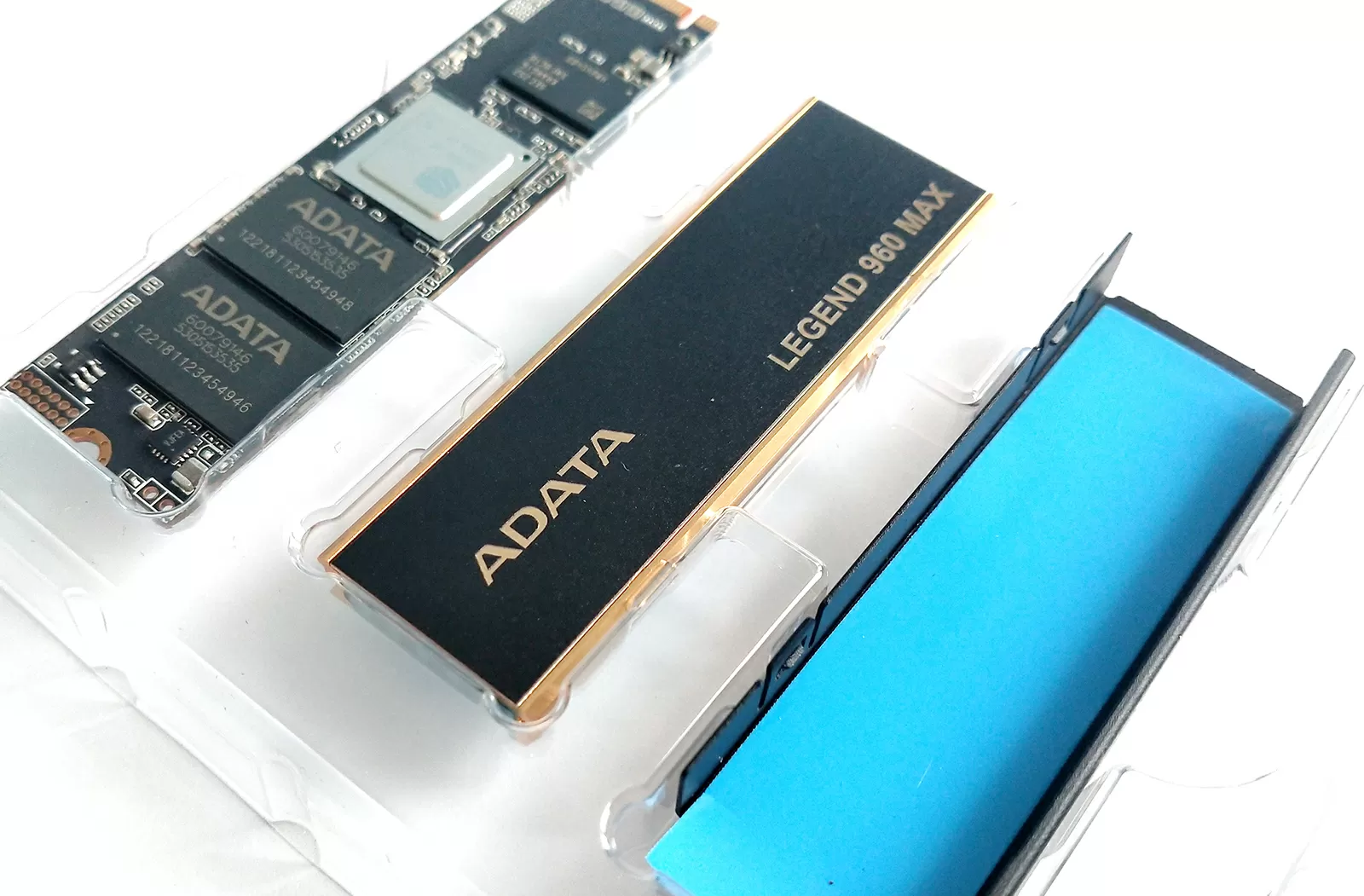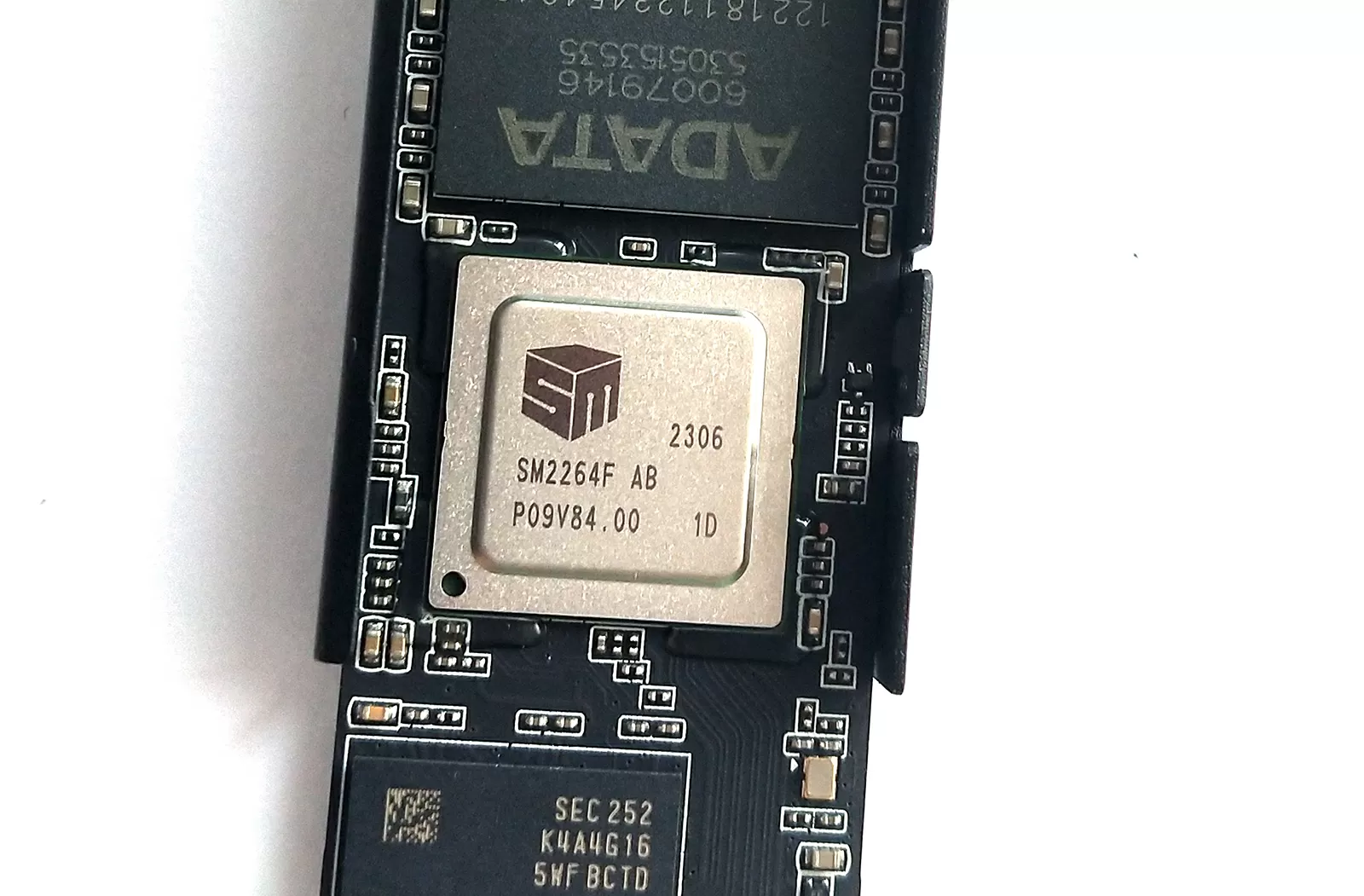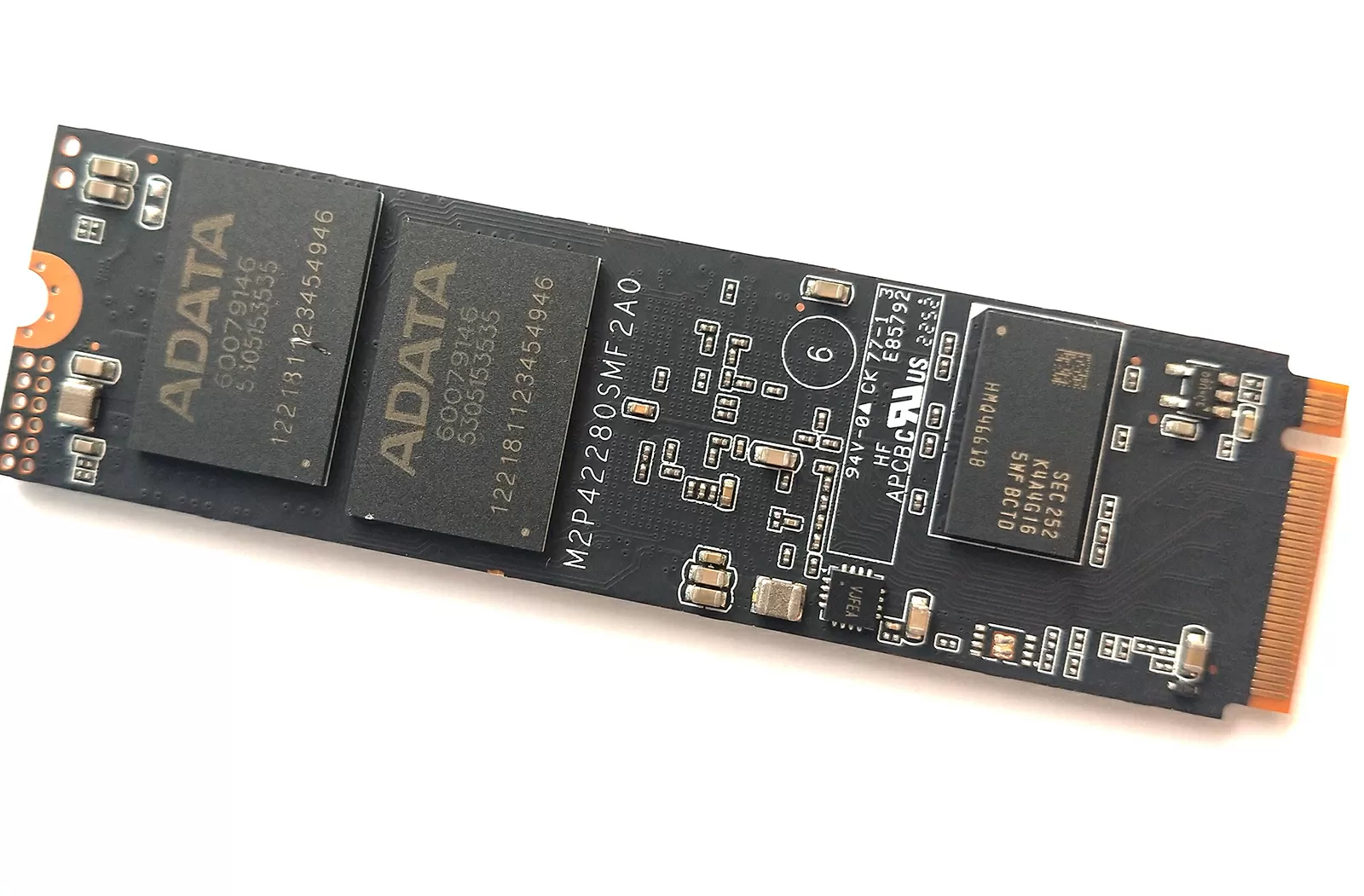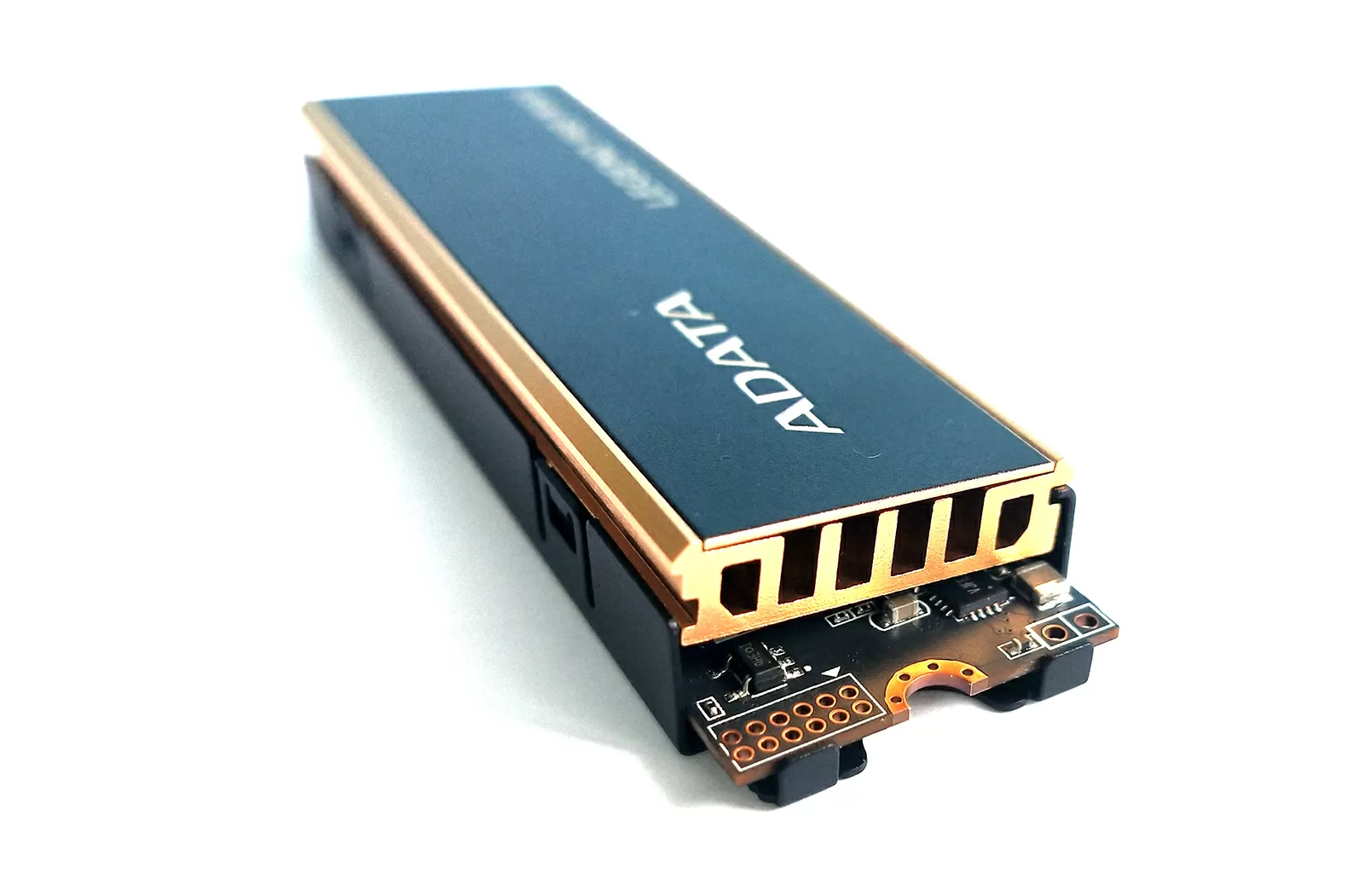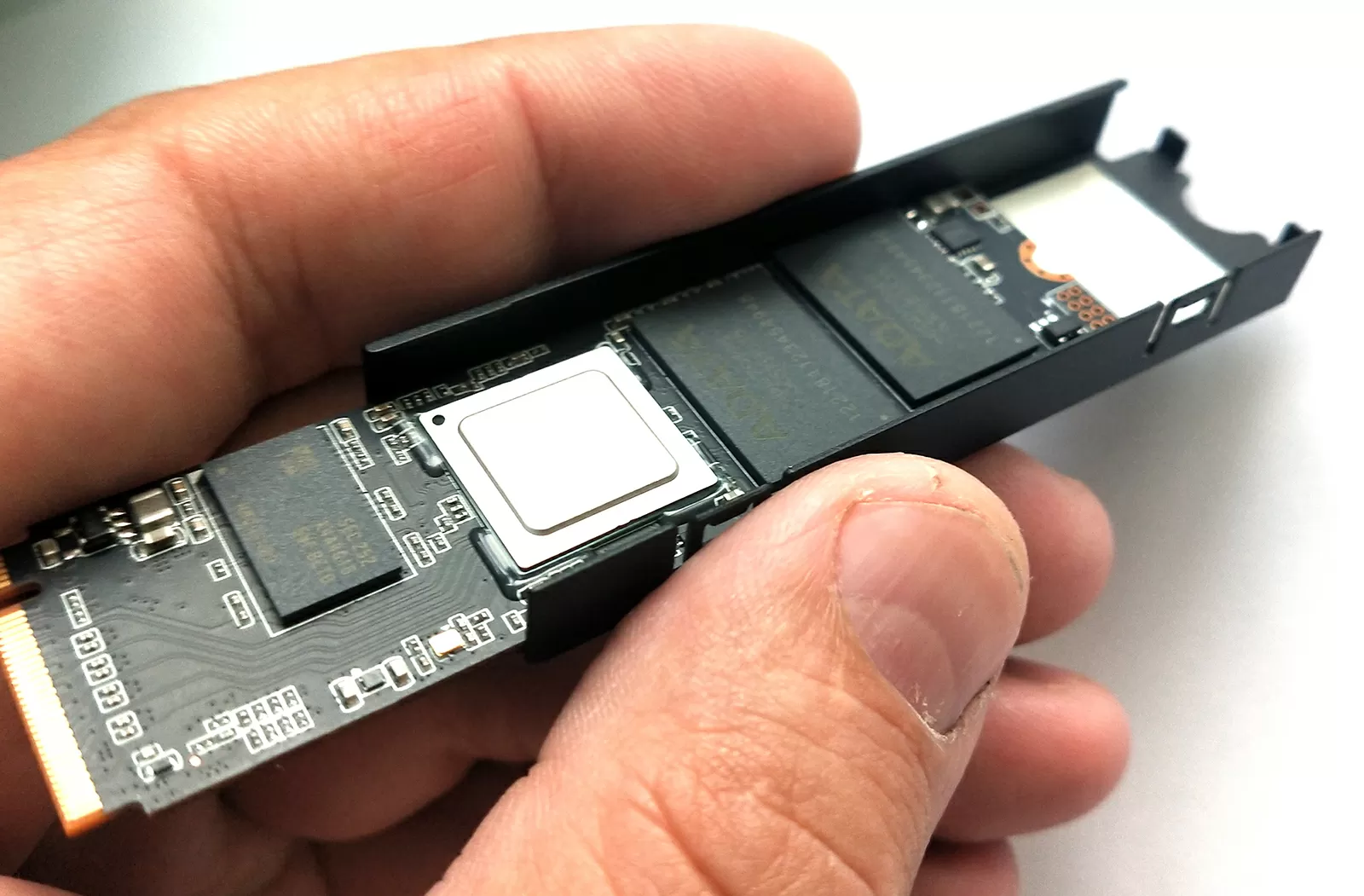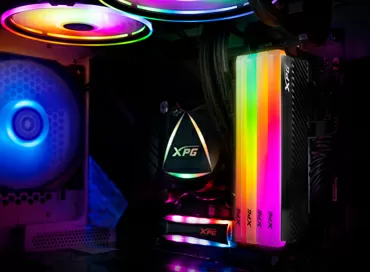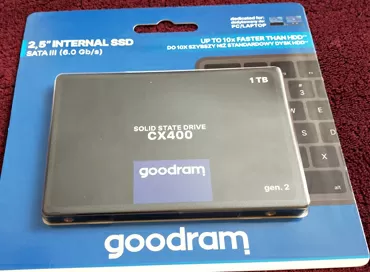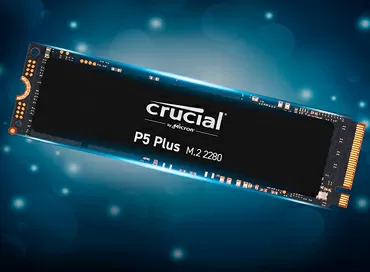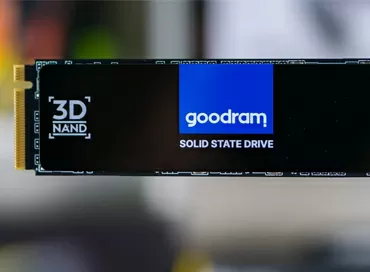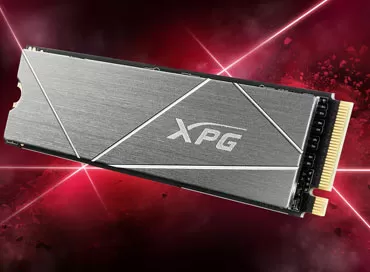How SSD A data Legend 960 [ALEG-960-1 TCS] behaves in office and server loads
We have an NVME SSD Adata Legend 960 of M.2 2280 format with a volume of 1 TB, and this model is interesting because it has a two-way layout with two cache memory chips controlled by a top controller in its line, Silicon Motion SM2264. If you do not go into the technical details of transferring data bits from the controller to the memory chips, then the rule is basically true: the more memory chips, the better the SSD holds a multithreaded and mixed load, and the presence of as many as two cache memory chips instead of one allows you to avoid bottlenecks in cases where cache performance becomes insufficient. This unpleasant effect manifests itself mainly during prolonged intensive load - longer than 1 minute, which is mainly formed by data analysis applications, backup systems, situations when an SSD is used as a caching device for an array from HDD and when rebuilding software RAID from SSD. In normal situations of home/office use, two parallel caches give a more stable speed, without sharp failures.
The Adata Legend 960 uses NAND memory chips with their own marking: Adata 60079146, which are Micron B47R, - 176-layer TLC with 512-bit crystals. For caching, DDR4-2666 chips with 512 MB each produced by Samsung are used with the marking K4A4G165WF-BCTD.
The Silicon Motion SM2264 controller with NVME 1.4 support was introduced back in 2020, but it appeared on the market relatively recently. It is a 4-core ARM R8 processor manufactured using 12nm technology. It supports 4 PCI Express 4.0 channels with speeds up to 16 Gbps per channel and 8 NAND memory channels with speeds up to 1600 MT/s per channel. Among the features of this top-end controller in its line is support for NANDXtend to maintain data consistency and built-in RAID, well, in other words, to speed up writing to chips.
This controller can provide sequential read speeds of up to 7.4 GB/s and write speeds of up to 6.8 GB/s, and random access speeds can reach as much as 1 million IOPS. That is, in principle, if 5-6 years ago 1 million IOPS looked like a 20-kilogram flash array worth several tens of thousands of dollars, today it is a small handkerchief of 7 chips priced around $ 100.
The two-sided layout requires similar cooling, and not every motherboard is designed for a heat sink from the "back" of the M.2 drive, so the Adata Legend 960 version of the "MAX" is already supplied with a radiator.
The reverse part of the cooler, the one with which it is attached to the back of the SSD, is covered with double-sided tape, which is so evil that as soon as you put the drive on it, it will grab tightly, and it will be very difficult to tear it off - evenly heating it with a hairdryer and smoothly pulling it over.
Why put such a strong adhesive tape, I do not know - this is definitely a minus, because the price of an installation error here may be too high: if you stick it crookedly, you will not pull it away.
Test results
Of course, the Adata Legend 960, as a top-end desktop drive, was designed to show 7 GB/s in CrystalDiskMark, and it is for this reason that we do not use this test. It is much more interesting to see how much this SSD has advanced compared to the models of previous years in everyday tasks of workstations. For comparison, we will use the Crucial P5 Plus 1TB and Adata Gammix S50 Lite 1TB. Following the proven methodology, with the help of the Iometer program, the disk was filled with 80% random data. After each test, a break of 10 minutes was taken to normalize the drive and apply automatic cleaning and optimization mechanisms (if any).
Single-thread results
Most of the office applications (yes, almost all) work with the disk subsystem in one thread, and here it is important for us to understand the response time of the drive and the bandwidth in different patterns.
So far, the speed of single-threaded random reading is measured not even in hundreds, but in tens of megabytes per second, literally every digit is important here. Adata Legend 960 leads among our test subjects, but after about 4 minutes the speed drop begins, but the access time practically does not change. This is probably due to the peculiarities of the controller's pre-reading, but definitely not with heating.
Random recording is stable throughout the test, and just this diagram shows the difference between a 4-chip SSD (Adata Gammix S50 Lite also has 4 memory chips) from a 2-chip Crucial P5 Plus 1Tb, which is considered a very good SSD, but demonstrates periodic speed failures.
Sequential reading gives about 2640 MB / s, and constantly, without blockages and bursts.
Sequential recording of such large volumes is always difficult for any SSD, and here neither a double cache nor a double chip layout give any advantages, but on the contrary, they interfere. The speed of the Adata Legend 960 in this test is dancing approximately in the range of 600-700 MB / s, but it remains in the form in which we would like to see an NVME SSD. For comparison, the inexpensive gaming Adata Gammix S50 Lite in this test fell to HDD speed, and the famous Crucial P5 Plus 1Tb - to SATA SSD speed. The median speed of the Adata Legend 960 in this mode is approximately 760-850 MB/s, and you will get this speed when transferring virtual machines to this drive. And the absence of serious failures allows you to install it in NVME RAID, for example, based on ZFS. The process of resilver when adding this SSD to the array runs just at a speed of about 800 MB/s.
Complicating access patterns in applications, we see that the speed remains approximately the same as on simple patterns with a fixed block size.
And interestingly, there is no such obvious manifestation of the caching area at the beginning of the volume, that is, it turns out that at the beginning of the mixed load, Adata Legend 960 is slower than it could be, and at the end it is faster. Well, what can I say - stability!
Moreover, this stability is connected precisely with write operations, because as soon as we return to complex read operations, we see that there is some little plus from caching at the beginning of the range.
In general, summarizing the single-threaded tests, I can say that the Adata Legend 960, thanks to a 4-core controller and a 4-chip layout with two cache chips, shows extreme speed stability. Absolute indicators are already fading into the background here, although they are, if not record-breaking, then simply magnificent. For me, it is more important that this SSD does not fail in speed to the level of HDD or USB flash drives, as it happens with more expensive models. In general, I believe that for any tasks implemented on a workstation or a personal computer, such an SSD design is optimal at the moment.
Multithreaded server load tests
Let's see how the SSD will cope with the patterns of server loads. Here I will not compare it with competitors, for one simple reason: the test showed that the Adata Legend 960 1Tb process up to 128 incoming streams (I consider the response time under load to be tolerable - up to 20 ms). Neither the Crucial P5 Plus, nor even the Adata Gammix S50 Lite, are ready for such a number of "incoming" ones, and their results would simply spoil the diagram. What is 128 threads in server life? This means that there are 128 applications accessing the disk at the same time, and most likely a couple of hundred virtual machines running in normal mode.
In Virtual Storage Infrastructure and Virtual Desktop Infrastructure environments, the test drive behaves completely differently over time. VSI is more predisposed to reading in small blocks, but I can't explain the abnormal reduction in access time after 200 seconds: usually, over time, the speed only decreases, as the drive begins to overwrite uncleaned blocks.
In database patterns, SSD behavior is typical, and if you don't look at the number of threads: having worked out free areas, when working with SQL, the controller overwrites the uncleaned ones. In the ORACLE pattern, the write is only 9% of the total number of requests and goes in large blocks - 128 and 256 GB, but the main load is reading in blocks of 1004 KB. This pattern is traditionally considered the most difficult, but the access time of the drive, even in 128-stream loading, remains constant, although it exceeds the "comfortable" limit of 20 ms.
Conclusions
Our tests have shown that the SM2264 4-core top controller coupled with a 4-chip layout and 2 cache chips is a win-win design that provides a unique stability of its kind well under almost any load. In multithreaded mode, Adata Legend 960 shows results comparable to RAID arrays from flash memory, and therefore this drive is very well suited for use in ZFS, virtualization, and LVM, and where you encounter write amplification and read amplification phenomena, that is, where one read operation/application writes account for several read/write operations to disk.
The drive is hot, and the two-sided layout requires heat removal not only from the front side, but also "from the back". This can cause difficulties when installing bifurcation boards with built-in coolers, especially if there are already 1-sided SSDs there. And the complete radiator, which comes in a box with an SSD, is better than nothing, but still not top. Considering this feature related to heat dissipation, if you install an SSD under a good airflow, it will perfectly take root both in the workstation and in the server.
Michael Degtjarev (aka LIKE OFF)
08/07.2023

